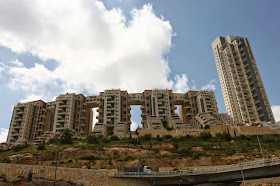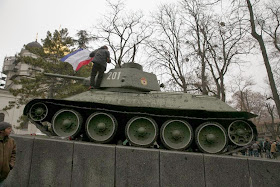by Benson Agoha
 * Professor Robert Mair - Head of Civil Engineering and of the Centre for Smart Infrastructure and Construction (CSIC) at the University of Cambridge.
* Professor Robert Mair - Head of Civil Engineering and of the Centre for Smart Infrastructure and Construction (CSIC) at the University of Cambridge.
 * Professor Robert Mair - Head of Civil Engineering and of the Centre for Smart Infrastructure and Construction (CSIC) at the University of Cambridge.
* Professor Robert Mair - Head of Civil Engineering and of the Centre for Smart Infrastructure and Construction (CSIC) at the University of Cambridge.
Researchers from Cambridge University are using the latest sensing technologies to gather necessary information about old and ageing infrasxtructure in order to accurately protect or determine an upgrade.
By attaching sensors to a tunnel 25 metres beneath the earth, the researchers gather massive amounts of information about instrastractures which they analyse and determine the best ways to protect them.
According to Cambridge, the new techologies are "providing engineers with an inexpensive and efficient method of monitoring, maintainng and protecting the UK's instracture, now and well into the future."
Professor Robert Mair of the Center For Smart Infrastructure and Construction, University of Cambridge explains who is leading the project says projects like the Crossrail "omes with all sorts of engineering challenges among which include the question of "how you excavate large tunnels underneath urban infrastructure without causing any distress to buildings or other tunnels.”
Proessor Mair said the sensors help them determine how the infrastuctures are behaving and whether have deformed (bent) or not.
He said “By installing the kind of sensors that can give a continuous update about how much those tunnels might be moving and what changes are taking place, we can answer a lot of important questions about the value of our current infrastructure, the future of it, whether it needs to be maintained, whether it needs to be replaced - all those kinds of issues can be much better quantified.”
The report published by Cambridge Research this week said the Royal Mail's tunnel, which was used to carry post across London from 1927 until 2003, is now the site of a unique underground laboratory where the University's engineers are monitoring movement in real time and seeing how the tunnel changes as a gigantic new tunnel is constructed just beneath it.
Inside the tunnel several of the sensors are attached and Mehdi Alhaddad, a PhD student, who has been monitoring the Royal Mail tunnel for more than a year said “Together, the sensors paint an incredibly accurate and detailed picture of how the older tunnel is behaving, which will inform the best way to protect and maintain it.”
“In future, this type of technology could also be used to efficiently and economically monitor much of the UK’s Victorian and 20th century infrastructure, such as the miles of tunnels of the London Underground, 70 per cent of which is made of cast iron, similar to the Royal Mail tunnel,” she added.
To read the full Cambridge report click here >>> [THE MAKING OF A SMART TUNNEL ].
* Twitter: @woolwichonline.
* Facebook: Woolwich Onlne.
* Google+: Woolwich Online.
* Photo Credit: MS.
* Facebook: Woolwich Onlne.
* Google+: Woolwich Online.
* Photo Credit: MS.















































































































































































No comments:
Post a Comment